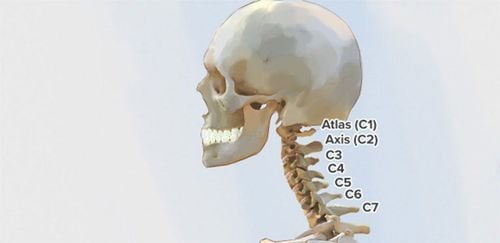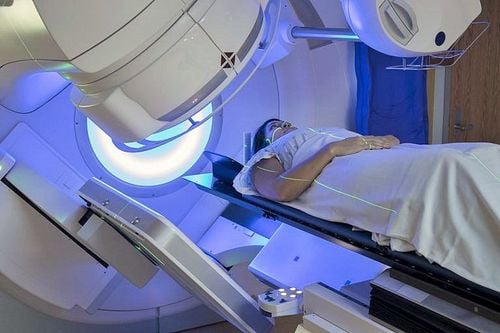This is an automatically translated article.
The article is professionally consulted by Dr., Doctor Tran Nhu Tu - Head of Diagnostic Imaging Department - Vinmec Danang International General Hospital.
X-ray is a fairly common and familiar term in medicine. So what is an X-ray and what is an X-ray for? Here are 22 answers to the problems associated with X-ray radiation, as well as their benefits and risks.
1. What is radiation?
Electromagnetic radiation is a source of energy that travels through space, including light, X-rays, gamma rays, microwaves, and radio waves. It has many uses, such as sterilizing food and medical equipment, creating diagnostic imaging tests, or even treating certain diseases.
2. Where does the radiation come from?
Radiation is almost ubiquitous. There are two main sources of radiation:
Natural background radiation: from the sun (cosmic radiation), the earth (Radon gas) and natural radioactive substances in the human body. The average person is exposed to 3.1 mSv of natural background radiation each year depending on where they live. Medical exposure radiation: mainly from X-ray machines and CT scanners
3. What is an X-ray? X-ray for what?
X-ray is a type of radiation with a large amount of electricity, used in medical imaging tests such as X-ray, computed tomography (CT scan), PET/CT or angiography and electrocardiogram. intervention. As X-rays pass through the body, the internal organs absorb part of the X-rays, the rest create images. X-rays help detect unusual health problems and diagnose certain medical conditions.
4. Do X-rays increase cancer risk?
When X-ray or any radiation source passes through the body, it causes damage to DNA, causing DNA to be damaged directly by radiation. If DNA is damaged, three things can happen:
Cell death: Occurs only with very high doses of radiation. Perfect Self-Repair Cell: This is the most common case. Cells repair themselves incorrectly: Although rare, this can cause a cell to suddenly become overactive or develop into cancer. The process from radiation exposure to the formation of cancer takes up to several decades.
5. Are the cancer risks from X-rays proven?
Currently, there are no studies that confirm the cancer risk is directly related to the low-dose radiation used in diagnostic imaging tests. To prove it scientifically, it takes close follow-up of nearly a million patients for decades to come to a conclusion.
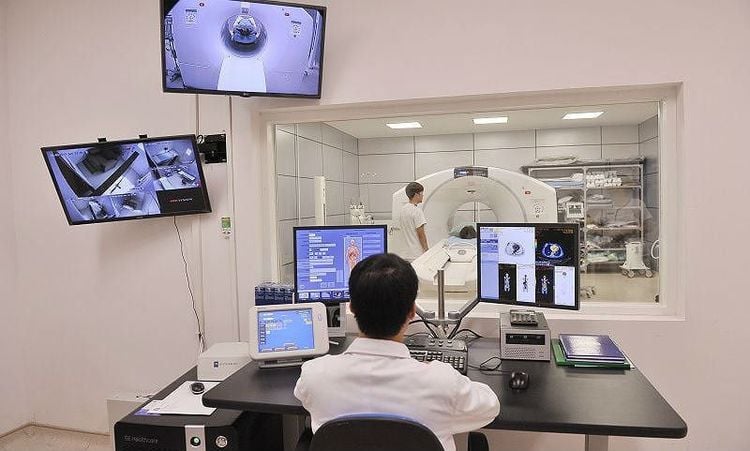
6. Is radiation also used to treat cancer?
Radiation has the potential to successfully treat some cancers in the form of radiation therapy. High-dose radiation destroys cells, especially fast-growing cells such as cancer cells, hair cells, and the lining of the digestive tract. The dose of radiation used in radiation therapy is much higher than that used for imaging tests.
7. For cancer patients, does radiation from imaging tests make the disease worse?
No. Low-dose radiation from an X-ray does not affect cancer. In contrast, high-dose radiation is also used to treat cancer. Low-dose exposure only increases the risk of cancer forming after decades of exposure. Thanks to X-rays, many patients are found to have cancer, so that they can be treated early.
8. Why is the average risk of cancer so high?
Even without radiation exposure, the average risk of malignancies was 37.5% for women and 44.9% for men. However, each individual's actual prognosis must be based on other risk factors, including:
Unhealthy lifestyle: smoking, sedentary, unhealthy diet Genetics: money family history of cancer Radiation exposure Most cancers appear as people get older, the average risk of dying from cancer accounts for 25%.
9. How do age and gender affect cancer risk?
In terms of age, children are most at risk of cancer if they are exposed to radiation. The first reason is that because a baby's cells divide and grow rapidly, they are easily destroyed by radiation. The second reason takes into account the child's long life in the future. Cells exposed to radiation at an early age have enough time several decades later to form cancer. Therefore, if X-rays are required for pediatric patients, most hospitals use lower radiation doses and carefully shield organs that do not need to be examined.Regarding gender, women have a slightly higher risk of cancer than men when exposed to the same dose of radiation. This conclusion is based on high-dose exposure data from survivors of atomic bombs, nuclear accidents, and early X-ray exposure.
10. What is the risk to the fetus from radiation exposure?
Although there is no definite conclusion about the effects of X-rays on the fetus, children are always more sensitive than adults, so the fetus is also assumed to be at high risk. Pregnant women must tell their doctor about their pregnancy so that they can take precautions, reduce risks, or substitute safer imaging tests, such as MRIs and ultrasounds.
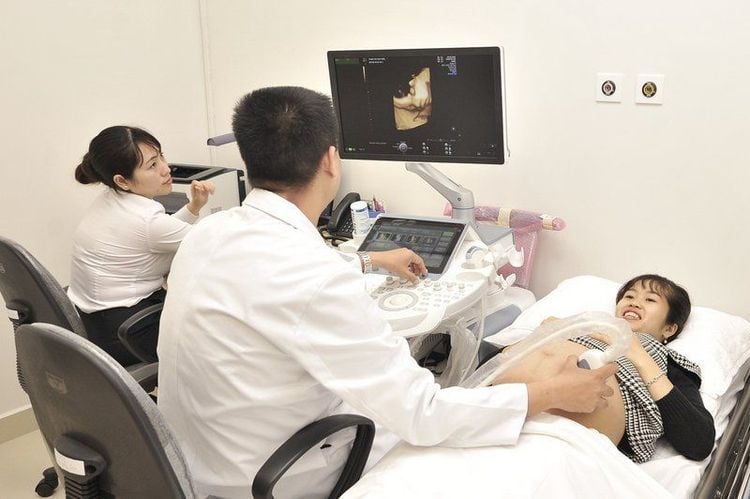
11. Can MRI and ultrasound cause cancer?
Magnetic resonance imaging (MRI) uses strong magnetic fields and radio waves to obtain images. Meanwhile, ultrasound uses sound waves to create images. Both forms do not use radiation and are not associated with cancer risks.
12. Should mammograms be used to screen for cancer?
Mammograms have been shown to reduce breast cancer mortality by about 30%. Early detection of breast cancer with mammograms saves lives. Therefore, women over the age of 40 are recommended to have a mammogram every year to screen for breast cancer.
At Vinmec International General Hospital, the Mammomat Inspiration Mammography System is applied, which is a digital X-ray machine system for high-resolution images to help improve diagnostic quality, it also has features to help perform interventional procedures for mammary glands.
13. Do mammograms increase thyroid cancer risk?
The thyroid is located in the neck and is exposed to very little radiation during a mammogram. The average risk of thyroid cancer from a mammogram is about 1/158 million. For women aged 40 to 80 who have an annual mammogram, the risk of thyroid cancer is 1 in 17 million.
14. Are dental X-rays dangerous?
Dental radiography is one of the forms of testing that uses the lowest radiation dose, only about 0.005 mSv/time. This level is not even close to the amount of exposure to natural background radiation a day, equivalent to radiation exposure from a short flight (about 1-2 hours). Dental X-rays every two years do not cause any health problems. What's more, proper shielding makes the potential risk virtually non-existent.
15. What is the correlation between medical radiation and background radiation exposure?
Average exposure to natural background radiation: 3.1 mSv/year/person. Radiation exposure from medical sources (mainly CT scans): 3.0 mSv/year/person. Average total radiation exposure from all sources: 6.2 mSv/year/person, nearly double what it was 20 years ago, when CT scans weren't as common as they are today. A standard dose of chest CT scan: 7 mSv. One standard chest radiograph: 0.1 mSv. Note that these are statistical averages, radiation exposure will vary widely from person to person.
16. What is the radiation level from flights?
Each passenger is exposed to 0.02 mSv of radiation after a 7-hour flight (much smaller than a single chest x-ray). Pilots are exposed to 2.2 mSv more radiation each year, the equivalent of one dose of a brain CT scan.

17. How much radiation does airport security scanners for passengers use?
There are two types of full body security scanners at airports, one uses radio waves so this airport security scanner does not cause cancer, the other uses very weak X-rays with 0.0001 mSv per each scan. It can be compared as follows:
80 airport security scans equals 1 day exposure to natural background radiation 200 times corresponds to a flight lasting 7 hours 1000 security scans equals 1 chest x-ray.
18. How can I protect myself from radiation exposure?
Almost natural background radiation is unavoidable. To limit medical radiation exposure, patients should consider this before undergoing radiation imaging tests. In cases where it is mandatory to do so, it is advisable to protect and shield the non-photographic parts of the body to reduce the area exposed, including when taking dental X-rays. However, because the risk is negligible, patients should not be too worried when being ordered by a doctor to have imaging tests.
19. Is there a limit to radiation exposure?
Yes, this limit is for medical personnel such as radiology technicians, radiologists, workers in radioactive environments, and pregnant women. Specific examples:
Radioactive factory workers: about 2-5 mSv/year/person and checked monthly. The total dose limit in the body is 50 mSv/year, equivalent to 7 chest CT scans. Pregnant women: up to 5 mSv during pregnancy, equivalent to 7 abdominal X-rays.
20. How much radiation are healthcare workers exposed to?
The limit for radiation exposure of healthcare workers is 20 mSv/year. Protective equipment plays a major role in reducing radiation exposure for healthcare workers and patients alike. They may use leaded glasses to protect their eyes from cataracts caused by radiation from the Lens. In addition, sterile gloves also reduce radiation exposure to the hands during procedures.
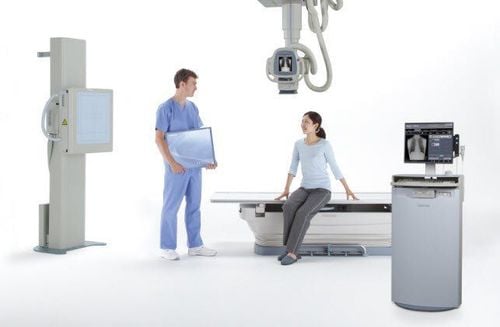
21. Do cell phones cause cancer?
No studies have proven a link between cell phone use and brain cancer. Since cell phones emit radio frequencies, this is a form of radiation unlike the X-rays used in X-rays and CT scans. Over the past 30 years, the number of people using mobile phones has increased tremendously, but the risk of brain tumors has barely changed.
22. What are ways to reduce medical radiation exposure?
Avoid unnecessary imaging tests Ask your doctor if you can choose an alternative ultrasound or MRI Get checked and examined at large, reputable hospitals Keep test results to limit Avoid having to take pictures again when you change the place of diagnosis. Around the issue of "What is X-ray for?", medical experts around the world all confirm that X-rays and other similar imaging exams play a key role in diagnosis, helping to detect diseases and saved countless lives. The positive uses of X-rays far outweigh any potential, insignificant risks.
Please dial HOTLINE for more information or register for an appointment HERE. Download MyVinmec app to make appointments faster and to manage your bookings easily.
Reference source: Xrayrisk.com





